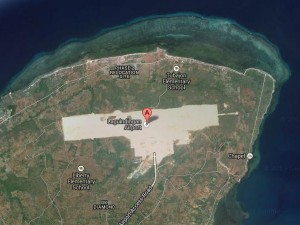
Jose Budiongan, airport manager, said the Civil Aviation Authority of the Philippines (CAAP) has been testing and calibrating the instrument landing systems or ILS, which had recently been put up.
The ILS is a vital piece of ground equipment that tells aircraft the precise position of the runway.
When it opened in June 2013, replacing the Lumbia Airport as gateway to Northern Mindanao, Laguindingan Airport became an object of ridicule for its lack of equipment.
Business leaders said it was an airport that was difficult to locate.
Since its opening, pilots landing aircraft at the airport had to rely on visuals to bring their plane down safely.
But Budiongan said the new airport would soon be able to take in flights or send one even if it was pitch-dark, with the installation of the ILS and other pieces of equipment, including a VHF omni-directional radio range (VOR); the Distance Measuring Equipment (DME); the Meteorological Observing System; Precision Approach Lighting System-Category 1; and the Precision Approach Path Indicator.
He said CAAP would test the night flight capability of the airport in the second week of November.
“But we have to wait for the airline companies to do the night flight, if they want to,” Budiongan said.
Cagayan de Oro City Mayor Oscar Moreno said the installation of the ILS and other instruments would mean an increase in the number of flights in and out of the airport from its current average of 18 landings and take-offs.
Budiongan said he agreed with Moreno and that with the night flight capability, the airport’s capacity would likely grow to about 1.6 million travellers per year, twice the current capacity it has.
He said with the projected increase in passenger traffic, the Department of Transportation and Communication (DOTC) has started considering expanding the airport terminal.
In jest, Moreno said: “Ma-landingan na (it can be landed on now).”
RELATED STORIES
New airport, new worries
New Cagayan de Oro airport lacks navigational aids—CAAP